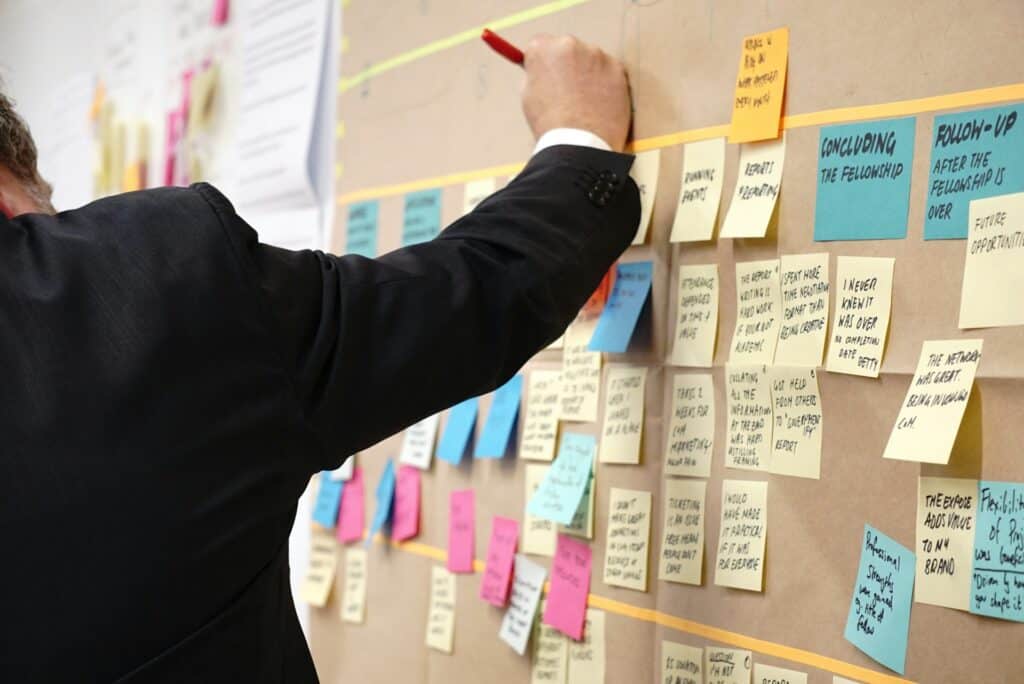Table of contents
- Why Motivation Is the Foundation of Strong Team Dynamics
- Easy Team Building Activities That Make a Big Impact
- Motivational Examples You Can Use Right Now
- Building Company Culture Through Inclusive Practices
- How to Support Remote Teams with Virtual Team Building
- When to Invest in Corporate Team Building Events
- Final Thoughts
- FAQs
Creating a high-performing team isn’t just about assigning tasks and meeting deadlines—it’s about cultivating a team culture rooted in trust, collaboration, and purpose. For new managers, particularly those stepping into leadership roles for the first time, finding ways to motivate employees, build team cohesiveness, and promote communication skills can feel overwhelming. However, with the right tools and mindset, it’s entirely achievable.
At Voltage Control, we believe leadership is a craft that can be developed through practice and awareness. This guide explores easy team-building activities, motivational examples, and inclusive practices that help foster authentic relationships and strengthen team bonds, whether you’re co-located or leading remote teams across time zones.
Why Motivation Is the Foundation of Strong Team Dynamics
Motivation is the fuel that powers a team’s ability to innovate, solve problems, and collaborate under pressure. Teams that feel motivated are more likely to take initiative, contribute creative ideas, and support one another. Conversely, a lack of motivation can quickly erode morale, stall momentum, and damage employee relationships.
As a new manager, your job is to create the conditions in which motivation can thrive. That means recognizing individual contributions, creating psychological safety, encouraging creative thinking, and promoting a shared sense of purpose. Leaders who do this effectively often see higher levels of employee engagement, stronger collaboration skills, and improved outcomes across projects.
Easy Team Building Activities That Make a Big Impact
You don’t need a huge budget or fancy venue to engage your team. The following easy team-building activities are accessible, fun, and effective at fostering connection and enhancing team dynamics:
1. Scavenger Hunt
A classic activity that encourages problem-solving, time management, and collaboration skills. Scavenger hunts can be themed to align with company values or even tailored around a specific project or product. For remote teams, tools like GooseChase or Slack-integrated scavenger hunts can replicate the experience virtually. This type of game encourages both individual contribution and team bonding, making it ideal for new teams or project kickoffs.
2. Escape Rooms (Physical or Virtual)
Escape rooms are built on collaboration under pressure. Teams must communicate clearly, divide tasks, and solve puzzles quickly—all while staying calm and focused. This format is excellent for developing problem-solving skills, reinforcing nonverbal communication, and observing how team members naturally fall into leadership or support roles. For virtual teams, providers like The Escape Game or Enchambered offer exciting digital alternatives.
3. Team Trivia Game
Trivia is a low-barrier way to foster verbal communication and lighten the mood. You can design trivia questions around industry knowledge, company history, or fun personal facts to help team members get to know one another. This is especially effective in hybrid settings and helps spark interaction across departments or teams that don’t work together often.
4. Obstacle Course (Physical or Conceptual)
Whether it’s a literal outdoor challenge or a metaphorical one built from team-based puzzles, obstacle courses test coordination, planning, and grit. This activity often surfaces leadership strengths, as participants must navigate challenges, support teammates, and adapt quickly. For those without physical space, consider tabletop simulations or digital alternatives that replicate the pressure and excitement of a real course.
5. Brain Teasers and Logic Riddles
Perfect for energizing the start of a team meeting, brain teasers stimulate creative thinking and collaboration skills. You might offer puzzles that relate to a current business problem or use classic riddles that require discussion and divergent thinking. These challenges build mental agility and promote teamwork without the pressure of formal deliverables.

Motivational Examples You Can Use Right Now
Motivating your team isn’t about grand speeches—it’s about consistent, thoughtful actions that show you care and that you’re paying attention. Here are expanded examples of practical approaches to motivation:
- Recognition Rituals: One of the most effective ways to boost morale is through frequent, authentic recognition. Set aside time during team meetings to celebrate wins—big or small. You might introduce a rotating “team member of the week” tradition, create a Slack channel for kudos, or send personalized notes recognizing specific contributions. The key is specificity. Saying, “Thanks for handling that stakeholder call with empathy and clarity” is more powerful than a generic “Great job!”
- Inclusive Ice Breaker Questions: Starting meetings with intentional questions fosters relational trust and encourages everyone to participate. Try prompts like, “What’s something you learned recently outside of work?” or “What’s a hobby you’d love to spend more time on?” These questions humanize the workplace and help uncover shared interests that lead to team bonding. For remote teams, these moments of connection are especially vital in maintaining cohesion and morale.
- Feedback Loops: Motivated teams feel heard. Implementing consistent feedback mechanisms—weekly check-ins, pulse surveys, or 1:1s—ensures team members feel valued and understood. This kind of open dialogue supports emotional intelligence on both sides and helps surface small issues before they become bigger problems.
- Personality Tests: Tools like the CliftonStrengths, DISC, or the Enneagram help identify working styles and preferred communication approaches. By sharing results among the team, you can foster empathy, reduce friction, and assign roles that match individual strengths—leading to increased team cohesiveness and more efficient collaboration.
Building Company Culture Through Inclusive Practices
Company culture is not built overnight—it’s a byproduct of daily behaviors, decisions, and interactions. Managers play a pivotal role in reinforcing the values that underpin culture. Here are some ways to do it inclusively:
- Model vulnerability and curiosity when discussing challenges
- Create space for all voices by structuring meetings to avoid dominance by a few
- Celebrate cultural and identity-based holidays across the team
- Invite team members to share their stories through “Spotlight Sessions”
The cumulative effect of these efforts is a workplace where team members feel seen, safe, and supported—and more likely to go above and beyond for each other.
How to Support Remote Teams with Virtual Team Building
Building camaraderie in distributed environments can feel daunting, but virtual team building is both effective and scalable. Some key strategies include:
- Scheduled Play Time: Just as you’d plan a lunch or happy hour in person, create space for fun online. Trivia, Pictionary, digital escape rooms, and asynchronous games like “Two Truths and a Lie” encourage team bonding and reduce Zoom fatigue.
- Cultural Rituals: Create virtual rituals—Monday mood check-ins, Friday wins, or themed team backgrounds. These shared habits establish continuity and help remote employees feel part of something greater.
- Visual Collaboration Tools: Tools like Miro or MURAL support brainstorming and simulate whiteboarding sessions, helping maintain the creative energy often lost in virtual settings. These tools also strengthen collaboration skills across locations and time zones.

When to Invest in Corporate Team Building Events
If your team has grown rapidly or you’re experiencing silos and misalignment, it may be time for structured corporate team building. These events—led by external facilitators—go deeper than fun and games. They focus on:
- Uncovering latent team dynamics
- Strengthening communication skills
- Building shared language around conflict and feedback
- Enhancing team cohesiveness through real-world simulations.
Final Thoughts
Your leadership style shapes more than just workflows—it shapes culture, relationships, and team potential. By using team-building games, modeling inclusive behavior, and investing in the emotional fabric of your team, you can unlock a workplace defined by trust, creativity, and growth.
Treat this process as a leadership exercise in itself. Be intentional, be precise, and above all—take ownership of your professional narrative. Also, don’t forget to update your resume regularly and stay informed about what employers expect.
Your next opportunity won’t just come from what you’ve done—but from how clearly you can show where you’re headed.
Need help advancing your management career?
Voltage Control offers facilitation certifications tailored for new leaders. Contact us to learn more.
FAQs
- What is an easy team-building activity for small teams?
A scavenger hunt is a quick and flexible option for small teams. It encourages active participation, team bonding, and collaboration without requiring extensive setup.
- Can you give examples of how to motivate employees daily?
Yes—examples include public recognition, one-on-one feedback, offering growth opportunities, and using inclusive icebreaker questions to build rapport and trust.
- How do personality tests help improve collaboration?
They reveal communication preferences, stress triggers, and work styles, helping team members understand one another and improve collaboration skills and emotional intelligence.
- Are virtual team-building games really effective?
Absolutely. Virtual team building supports morale, encourages nonverbal communication, and prevents feelings of isolation—especially in remote or hybrid work environments.
- What’s the difference between team building and team bonding?
Team building is typically goal-focused and structured, while team bonding centers on emotional connection and trust. Both are crucial for a well-functioning team.
- How do I improve communication within my team?
Focus on active listening, encourage feedback, model transparency, and develop both verbal communication and nonverbal communication skills through practice and training.
- What are some creative team-building games for workshops?
Try role-reversal simulations, custom-themed trivia games, or even design sprints that include challenges like a personality test reveal or cross-functional problem-solving. These reinforce team dynamics in engaging ways.


